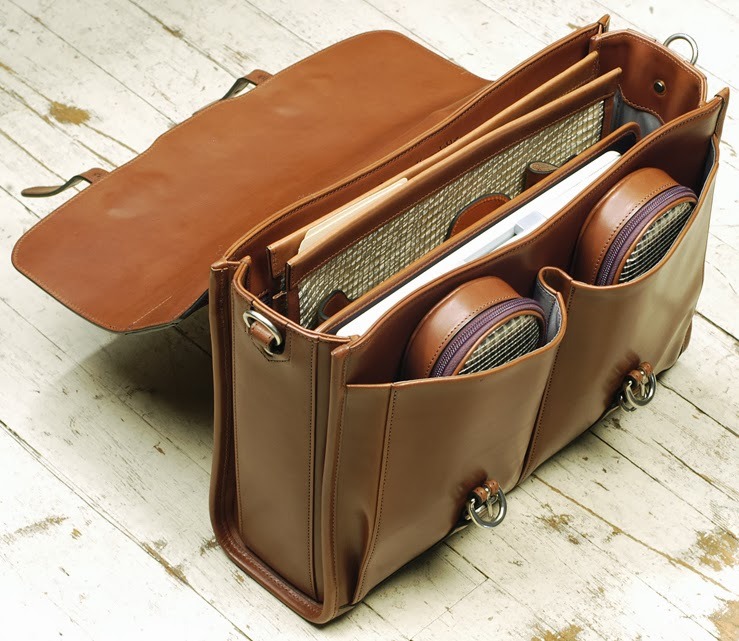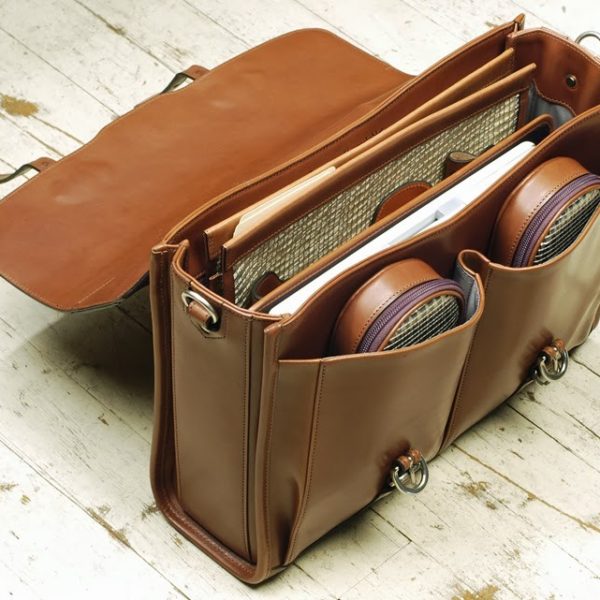
Our friend Réginald-Jérôme de Mans has a very good and very active bullsh*t detector, and there’s surprisingly more bullsh*t on menswear blogs and in fashion magazines than there is in companies’ marketing materials (which already sets a high bar). In a recent piece at A Suitable Wardrobe, de Mans talks about the dumb and not-so-dumb ways to determine quality in leather goods. An excerpt, pulled from the part about Esquire’s recent advice to ask salespeople whether something has been made with French or Italian calfskin:
No salesperson in any store I can imagine – including Hermès, the best well-known quality leather goods maker – would know whether an item was made with French or Italian calf, and most would make up a response on the spot. If the item had an Italian-sounding brand name, like David Brent’s Sergio Georgini, or was tagged “made in Italy,” they would suppose the leather must be Italian. The same would apply if the brand sounded French. But, of course, no matter where an item is made, or by whom, its materials are often sourced from somewhere else, for both good reasons and bad. So even if an item is marked “made in Italy,” for instance, its leather could have been sourced from Brazil, among many other places. (This leaves aside the thorny issue of country-of-origin labels not always meaning much work was done in that country.) The only way a salesperson would know where the leather came from would be if some sort of marketing materials for the item in question mentioned that fact specifically – but marketing materials are by definition self-serving too. I certainly wouldn’t expect a salesperson in a multi-brand department store to be so familiar with the materials used in a specific item, and wouldn’t trust one who claimed to be.
[…]
We all do want an easy metric, which is why we hope we can rely on essentially commodifying quality, as ignorant magazine writers do when they suggest all English shoes, all Scottish cashmere, or all Italian leather is of similar quality. The reality is far more complicated, boring, and ultimately discouraging, because brands and marketers use those metrics to substitute buzzwords for integrity. That has led to, ultimately, the perpetual one-upsmanship of brands like Loro Piana bringing to market new luxury fibers when cashmere was not enough: they announce “baby cashmere,” vicuña, lotus fiber and who knows what else, as well as to the arms race of ever finer yarn numbers (they’re not thread counts like on bedsheets) like Super 150s, 180s and 200s. A well-finished Super 100s from Lesser will feel better, wear better and look better than a Super 150s from a less trustworthy source. And unfortunately, Lesser and many other quality cloth houses like Fox and Minnis are generally only available in bespoke. But Loro Piana and Zegna have found an outlet for their lower quality branded cloth in having it made up by cheap suitmakers whose labels trumpet the brand which produced their cloth, without it having much bearing on the actual quality of make or cloth. What is the casual punter to do?
de Mans has some (reasonable) suggestions for how to assess leather quality later in the article. You can read the full piece here.
For what it’s worth, in my own attempts to learn how to determine quality in leather goods, I’ve found three things:
- As with everything, it helps to check out the best. Browse around, even in stores where you can’t afford any of the products. In doing so, you’ll start to get a sense of what qualities you might want to look for when shopping for things within your own budget. Of course, figuring out what’s actually on the “high end” is its own task, as not everything that’s expensive is necessarily good, but it’s useful to just keep an eye out and not be afraid to casually (and politely) browse, even in stores that are way out of your price league.
- Keep in mind that certain leather qualities are meant for certain design purposes. I was recently at a designer boutique in Canada, where slightly more “avant garde” leather jackets were being sold. The leather they used was somewhat thin, very waxy, and it crinkled easily. Someone might mistake it for bad leather, but it’s not in an objective sense. It’s just that the qualities the designer was looking for – how he wanted the jacket to drape, crinkle, and age – were very specific, so he needed a certain type of leather. When determining quality, it’s good to also keep in mind design purposes.
- Nothing substitutes for first-hand experience. After a while, once you’ve browsed around, seen things on the high end, and have had the chance to use leather products of different qualities, you’ll be able to spot the stuff that’s right for you.
